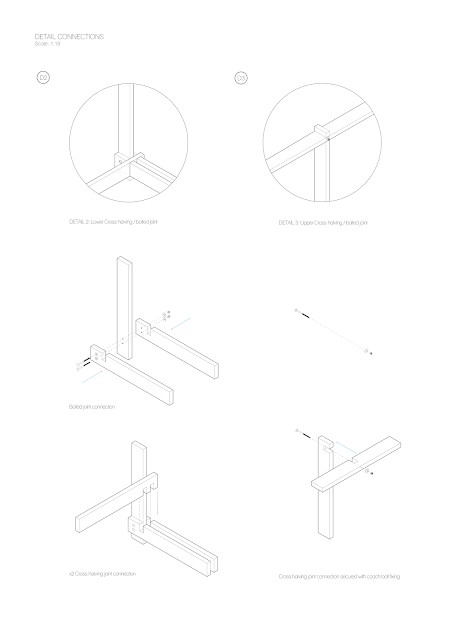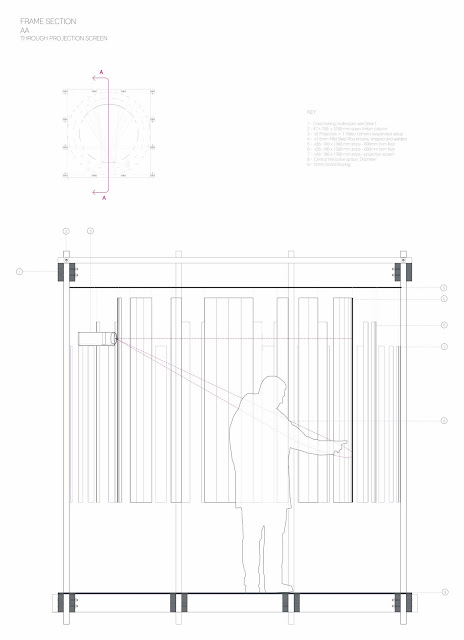“What''s a crit without a technical glitch?”
Despite the very awkward (walking to another room to fix the) technical fault regarding the video to projector setup during my presentation (!) the day was informative and educational to say the least!
The design process is again leading to new thoughts and developments, given some expert advice from the 'Usual Suspects' and the two guests speakers from the AA and UCL.
Main questions posed:
Is the framework over engineered? could it be constructed more simply and still enclose an immersive experience?
What message does the riot information projection convey? can it be refined?
Design Development:
Presentation sheets:
Experiment set-up No: 5:
Framework construction details:
The Video Projection:
Original test reel which was displayed during the presentation (Video: Tina Zacharia)
Can be found at: http://www.youtube.com/watch?v=3L-jbI9Zlh0&feature=youtu.be
 |
| Visual feedback loop x Video information projection (Presentation: Tina Zacharia) |
 |
| Riot glossary: building the narrative (Presentation: Tina Zacharia) |
 |
| The Crit Panel: left to right: Gabor Stark, Sam McElhinney, Abigail Batchelor (AA), Dr. Sophia Psarra (UCL) (photo: Tina Zacharia) |
Aiming to capture the essence of human interaction through an ephemeral collection of imagery via a visual feedback loop posed the questions of execution and structural simplification.
































.png)
.png)
.png)


.png)
.png)
.png)
.png)
.png)



